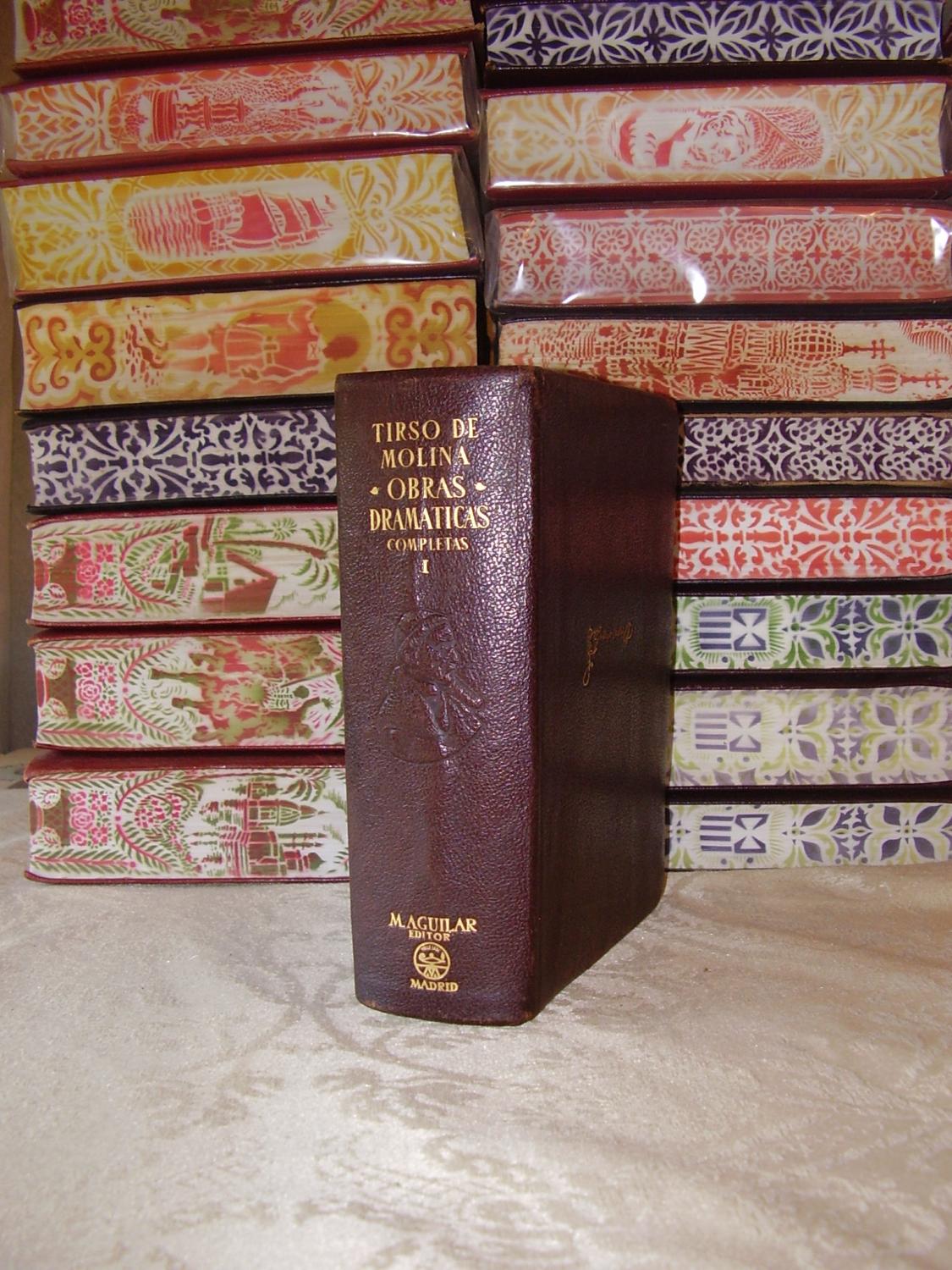Tirso de Molina He is one of the great playwrights of the so-called Golden Age, he stood out for being a great poet and narrator of the Baroque era, he followed the literary line of Lope de Vega, in this article you will be able to learn more about this writer.
Tirso de Molina
Also called Fray Gabriel Téllez, he is considered one of the great playwrights of the Spanish language and was one of the most important representatives of the so-called golden age of Spanish literature where other great writers even stood out.
He was a follower and student of Lope de Vega and kept his literary line very similar to that of that other great writer, his work was characterized by deeply analyzing the psychology of his protagonists, especially women who were the most representative of his work.
The variety and nuance to develop plays and written comedies allowed to create in their content, great works that dazzled many readers and scholars of the time, so much so that they had repercussions in the church to the point of almost excommunication and exile, for considering it inappropriate content. .
Regarding his private life, there are not many data related to his childhood, however with respect to his youth, it is known that he was dominated by knowledge and study alongside Lope de Vega, during his adult life he held various positions such as commander in convents and other positions, however his life was full of many problems.
On another occasion he was a chronicler and was even banished from his hometown for contravening the ideas of the rulers of the time in his works of comedy and satire. This magnificent author left more than 300 works when the printing press had not yet reached its full development, which makes us see that he had a special virtue for writing.
His main genre was comedy, so in some cases he touched the sentimental and emotional nerves of some dignitaries and religious leaders, however he stood out for performing various sacramental works and a large number of philosophical texts related to theology.
Biography
This great character was born on March 24, 1579 in the city of Madrid, he was baptized with the name Gabriel José López y Téllez, his parents Andrés López and Juana Téllez, were servants who worked for Mr. Pedro Masía de Tovar, and later for Count Molina de Herrera.
His baptism took place according to some reviews on March 29, 1579 in the parish of San Sebastián in Madrid, other historians assume his date of birth in the year 1584, but this is still not entirely clear, however the historian Blanca de los Ríos maintains the theory that a documentation of the baptism that dates back to that date came into his hands.
According to her, that baptism certificate is illegible, but you can carefully observe some details that verify the date described, the church and many historians contradict and discredit this information because for Tirso de Molina to be baptized on that date, the parents should have obtained a papal dispensation to enter the order of mercy.
First years
Tirso de Molina lived with his parents and the references of his childhood lack documentation, what is really known is his activity and development as a young man, he studied alongside Lope de Vega, of whom he was a great disciple. He met him in the city of Alcalá de Henares.
In that city he developed a theatrical line called lopista (Current that defended the literary ideas of Lope de Vega), created by Tirso de Molina himself. At the end of the year 1600, when he was barely 21 years old, he entered the order of Mercy and after trying the novitiate he took the habits on January 1, 1601 in the monastery of San Antolin in Guadalajara.
In 1606 he was ordained as a priest in the city of Toledo. During that time Tirso de Molina studied arts and theology, then in 1609 he began to show signs of his vocation for writing, later he moved to Galicia, Salamanca and Lisbon, a journey that lasted approximately 5 years.
His early works and literary growth
By the year 1611 Tirso de Molina had already written a series of novels that in order to maintain himself financially he sold them to certain readers who were looking for a way to obtain knowledge and entertainment, in this year it is believed that he composed his most important works «The shameful in Palace», «La villana de la Sagra», «The punishment of Penseque» and the trilogy of novels «Santa Julia».
Each of these works was written between 1611 and 1615. Likewise, the production of novels and dramas was developed quite copiously, Tirso de Molina wrote quickly, his talent was impressive, he even took the opportunity to introduce religious themes into the narrative content.
By 1615, simultaneously premiering several plays, with satirical and comedic content, allowed him to be sought after by many readers who found his work interesting. Between 1617 and 1618 he lived in Santo Domingo, there he got a job as a professor at the University of that city, which he worked for three years.
During that time. He met many religious and cultural personalities who helped him grow as a playwright and artist, always taking the religious order by his side that he never abandoned, he acquired knowledge related to the conquests, which later served him to include them in his literary content.
At the end of 1618, he returned to his hometown of Madrid, where he dedicated himself fully to writing various works that came to public light between 1623 and 1633, when his five-part comedic works called "Profanes comedies" appeared, which They caused quite a stir in the religious world.
The banishment of 1625
The comedy-style works of Tirso de Molina did not go down very well with the Madrid authorities, so the Count-Duke of Olivares convened a meeting with the aim of reforming customs and certain traditions, based on what was coming observing, on the order of the day he included the behavior of Tirso de Molina.
At said meeting, the count expressed that the scandal caused by the comedy-type works of the so-called Téllez teacher profane and create bad examples and incentives, for which reason it was agreed, and because it is such a notorious case, to consult with His Majesty, so that the Confessor express to the Nuncio and he throws you out of this place, sending you to one of the most remote monasteries of your religion.
Tirso de Molina was excommunicated for having violated the rules of decency and morality, forcing him not to perform any more comedies or any other genre of profane verse. That said, Tirso de Molina is banished from Seville and housed in the convent of La Merced, currently that building is part of the Museum of Fine Arts in Seville.
This resolution did not intimidate the friar, and he continued his literary work composing and writing works, that That same year he participated in a poetic contest on the occasion of the canonization of San Isidro, his work was not received and the result was never known.
For the year 1626, the Board of Reformation meets again, formed this time at the request of the Duke of Olivares, there it is decided to punish Tirso de Molina again with imprisonment in the Cuenca monastery, for having written profane and content-filled comedies. of bad incentives.
Banishment and major excommunication are requested again if he reoffends. This did not diminish the literary activity of Tirso de Molina either, and the young man continued writing, strangely no measures were taken to sanction again and the Duke's provisions were left aside.
Return to Madrid and death
That year Tirso de Molina returned to Madrid and was appointed commander of Trujillo, where he remained until 1929 when he returned to Seville and in 1632 he settled in Catalonia, during which time Tirso de Molina continued to write satirical works and comedies, among the most important are told "General History of the Order of Mercy", dedicated to the members of his Order...
In 1639 he was in Catalonia, where he was appointed general definer and chronicler of his Order and composed the work "General History of the Order of Mercy", which caused him certain differences with the members of the Order, however Pope Urban VIII awarded the degree of master.
The consequences of the content of his work led him to a confrontation in the year 1640, with the members of the Merced order, who asked for exile once again to the Cuenca region, where he was finally transferred, later he moved to the city of Soria where he was from the year 1645 in the convent of Our Lady of Mercy, there he was appointed commander.
In 1646 he was residing in the city of Almazán where he died in 1648. Tirso de Molina left a great intellectual legacy and a considerable influence on world culture, especially in the birth of the origin of the myth of Don Juan, the Trickster of Seville and the stone guest, which are emblematic characters and works in Baroque literature.
More important works
According to historical references, the works of Tirso de Molina exceed 300, however there is a testimony of the writer himself where he states in a prologue that he managed to have written more than 400 works, which leads us to think that he was a great master of the language and He was very fluent in writing.
Although the data is not precise, some historians think that it is an exaggeration to consider that number of works, of which there is no doubt that he was the most prolific playwright of the so-called Golden Age. However, more than 60 works of the type have been preserved. drama, comedy, and some proven references to prose-type works.
The narrative content, especially in dramas, presents a way in which comedy provides an integral show for the senses and the intellect, Tirso de Molina considered theater a playful and artificial form of expression, essential for artistic pieces since, by its variety allows you to get your own content substance.
The analysis of his work has made it possible to obtain elements that allowed him to help another to follow the path in the form of comedy, accepting it as an expression of art, which he considers was not compatible or comparable with the beauty of nature, very different in aesthetics to art.
In one of his works, he wrote in a prologue aspects related to the importance of theater explaining the difference between nature and art, where nature since its creation became an entity that cannot be modified, so that fruit trees always will bear fruit, and fish will always be born in the water.
For art, variation is probable and it is composed of dynamics and movement where the laws of the ancestors can be modified to infer from the comic to the tragic or vice versa, where the frameworks of content allow the seriousness of people to be offered as something humorous and ridiculous.
The arguments in Tirso de Molina's work are presented with a certain complication, even sometimes they are difficult to follow, there is a secret manifesto towards his intrigue that puts the reader in a constant variety for the use of his imagination.
With respect to the characters, they are treated from a more psychological way than the rest of the playwrights of the time, the female characteristic in their works is predominant, there is an important participation in the works of the female gender, we see how the character of Marta de Marta in the work "La piadosa" she is full of a network of situations that her personality is confused.
The comedy for Tirso de Molina stood out for presenting embarrassing situations in the characters where they always got away with it, in the type of palatine comedy this type of behavior was manifested. The importance of his work also lies in the fact that he never forgot the religious theme, and we appreciate the so-called autos sacramentales as a good development.
These works with an important religious charge will broadcast a mix of drama and comedy that sometimes caused certain problems, remember that the church was strict with the concepts of morality and virtue. Tirso de Molina developed many works of this type that help many people to know the realities of religion.
The style of his works was marked by maintaining conceptual forms, that is, he uses the description of things to argue a situation. The psychological complexity of some characters, whether in theater, comedy or drama, allowed Tirso de Molina to obtain a human character in each one.
Tirso de Molina is considered the most fruitful and prolific of the classical playwrights, endorsed by other authors and by himself, it is believed that he tried to maintain the literary line of Lope de Vega, giving birth to the movement called Lopismo, which seeks to promote the work and the narrative characteristics of this great author.
The situations in the works of Tirso de Molina are manifested in an implausible way, the change of personality of the characters and the constant modification in the clothing allows to give a criterion of the special handling that he gave to his works, which made him establish a handling of the appreciation of nature in a different way.
Fame and reputation transcended the limits of his environment, surpassed only by Lope de Vega and Calderón de la Barca himself, for a time his works were forgotten, especially in Spain, until in the eighteenth century some works were recovered and brought to public light.
Below we will see a list of works by Tirso de Molina where they are classified according to their style although some have different linguistic forms and belong to dramaturgy and theater, as well as others belong to drama and comedy, we try to classify them according to their chronological order .
- The Jewel of the Mountains, Santa Orosia (believed to be one of Tirso's earliest works in the religious and philosophical Comedy style)
- 1607 The lakes of San Vicente (Religious and philosophical comedy)
- 1611, The Shameful Man in the Palace (Comedy), The Melancholy (Drama), The Republic Upside Down (Historical Comedy), The Galician Mari-Hernández (Religious and Philosophical Comedy)
- 1612, How friends should be, La villana de la Sagra (Drama), El Aquiles (mythological comedy) La peña de Francia (religious and philosophical comedy), The woman who rules the house (on the story of Jezebel, Religious comedy and philosophical).
- 1613 The nymph of heaven (Religious and philosophical comedy of political satire), The divine beekeeper (Auto Sacramental), I don't lease the gain (Auto Sacramental), The godmother of heaven (Auto Sacramental, also considered a comedy of saints)
- 1614 The punishment of the penseque, Who shuts up grants (Comedy), Marta the pious (Drama), The lady from the olive grove (Villain historical novelistic comedy), La Santa Juana (Religious and philosophical comedy, Both is the most and the least ( Religious and philosophical comedy), The best gleaner (Religious and philosophical comedy, about the story of Ruth)
- 1615 Don Gil of the green tights, Love by signs (Drama). Love and jealousy make discreet (Historical Comedy), Lovers of Teruel (Historical Comedy), The condemned for distrustful (Religious and philosophical Comedy), The life and death of Herod (Religious and Philosophical Comedy), The Similar Brothers (Auto Sacramental), The Labyrinth of Crete (Auto Sacramental)
- 1620 The medical love (Drama), The jealous of herself (Drama), The villain of Vallecas (Drama) The trickster of Seville (Religious and philosophical comedy), The labyrinth of Crete (Auto Sacramental)
- 1621 Jealousy with jealousy is cured (Drama,), Find out Vargas (Historical Comedy), The pretended Arcadia (Mythological Comedy) The greatest disappointment (Religious and philosophical comedy), Tamar's revenge (Religious and philosophical comedy), Los cigarrales de Toledo (Prose)
- 1622 Antonia García (Historical comedy) Prudence in women (Religious and philosophical comedy), about Queen María de Molina
- 1623 Through the cellar and the lathe (Drama)
- 1624 The balconies of Madrid (Drama) Who does not fall, does not get up (Religious philosophical comedy)
- 1625 Love for reasons of status (Drama), There is no worse deaf (Drama),
- 1626 There is no worse deaf (Comedy), From Toledo to Madrid (Drama), La huerta de Juan Fernández (Drama). Los Pizarros trilogy (Historical comedy)
- 1630 Love for greater art (Comedy)
- 1632 Deprive against his taste (Drama, Comedy)
- 1635 Delight taking advantage (Prose)
- 1637 General History of the Order of Our Lady of Mercy (Prose)
- 1638 The quinas of Portugal (Historical Comedy)
- 1640 Genealogy of the Count of Sástago (Prose)
- 1644 The firmness in beauty (Drama).
- Life of the Holy Mother Doña María de Cervellón, discovered and brought to light in 1908.
The Myth of Don Juan Tenorio
The birth of this character is attributed to Tirso de Molina, when in his work (which is considered the highest of the writer) "El Burlador de Sevilla" appears a character who is in charge of conquering many women, he has no respect for the lives of others and takes it upon himself to defy the natural laws of man.
With respect to the work, there are many versions that indicate the date and place of its edition, however with the passing of time a long chronology has been elaborated in which the true origin, date and place of birth of the work are detailed.
According to some Italian historians, this work attributes the legend of Don Juan to a myth that appeared in Italy in 1620, in a story called "The stone guest", where a description very similar to that of Tirso de Molina appears.
The German version posits that the legend of Don Juan Tenorio is a drama performed by the jurists of the Ingolstadt region during the year 1615. The Spanish consider that the apparition of Don Juan Tenorio to which Tirso de Molina refers is based on related historical events with fiction.
It is believed that the character that Lope de Vega had presented in his works, such as the Count of Villamediana, is inspired.Another theory posits that the elements of the work "El Burlador de Sevilla" are contained in a sacramental act that was performed in Spain during the fifteenth and sixteenth centuries, in cultural movements called fulminated atheisms.
https://www.youtube.com/watch?v=u3e-wV9ZK5w
On the other hand, the presence of the character Don Juan Tenorio is attributed to a type of medieval folklore. Other Spanish historians establish that prior to Tirso de Molina there were theories of a Spanish court which contained material that some consider that the playwright himself could have used to create his character.
First edition
The first edition of the work is made in the year 1630 in the city of Barcelona, Spain by the publisher Gerónimo Margarit, the edition is currently in the National Library of Spain in Madrid. On the other hand, there is another work called "Tan Largo me lo fiais", which has no date or place of printing and is attributed to Calderón de la Barca.
Connoisseurs allege that this work is prior to the drama of Tirso de Molina, however the opinions are totally conflicting, since information even appeared that says about the date of the work El Burlador de Sevilla is prior to the text «Tan Largo me you trusted him».
The only text faithful to its first edition is made up of the one published in Seville between 1627 and 1629 by Manuel de Sande, and the work "Tan Largo me lo fiais", appears reviewed and published by Simón Faxardo between the years 1634 and 1635. Both are in the National Library of Spain.
the true author
According to some information, the two works "El Burlador de Sevilla" and "Tan Largo me lo fiais" are works by Tirso de Molina himself, however there is no data that can confirm this proposal, although they were published in different years, they are within the life span of the author, in addition to the work "tan Largo me lo fiais", is not attributed to any author until now.
Character
Don Juan Tenorio is a character that appears in the play when he seduces the Duchess Isabela in the city of Naples, then flees his city where he meets another lady named Tisbea, a fisherman by profession, whom he also deceives, Don Juan flees again and he arrives in Seville, where he begins another romance with Doña Ana de Ulloa, whom he even murders her father.
Don Juan flees Seville for fear of being discovered and some time later he returns to the city where he enters a church and sees a statue of the Commander, which is on top of his tomb, Don Juan invites her to dinner and the statue accepts, When they arrive at the appointment, the statue takes Don Juan by the hand and takes him to hell.
This is more or less in a short description the activity within the play "El Burlador de Sevilla" that Don Juan Tenorio stars in, among the characteristics of the character are the following: A very handsome and young man, from a good family, uses his influences of power to transcend all social and moral norms and laws.
He is a trickster, with a lot of courage and arrogance, he seduces women for fun, in the work the character appears according to the description of Tirso de Molina representing several facets, of seducer, and it is this characteristic that allowed to create a myth within the Spanish literature by Don Juan Tenorio.
The seductive conditions, the behavior and the structural content in which Tirso de Molina represented the character, made many leaders and governors of Madrid feel aversion, considering him a mockery of the church and the kingdom, however, not only the accusations are attributed to the work the "Burlador de Sevilla", also thanks to other works of playwright, sanctions were applied.
In the work there are several very picturesque and striking characters, however the one that transcended time and was taken as a reference was Don Juan Tenorio, who has even served as a reference for other authors.
These have elaborated novels, stories and stories related to the characteristics of Don Juan, the iconic character of Tirso de Molina that allowed him to transcend the borders of literary immortality.
If you liked this article, we invite you to visit our portal by clicking on the following links:
Biography of Jose Emilio Pacheco








